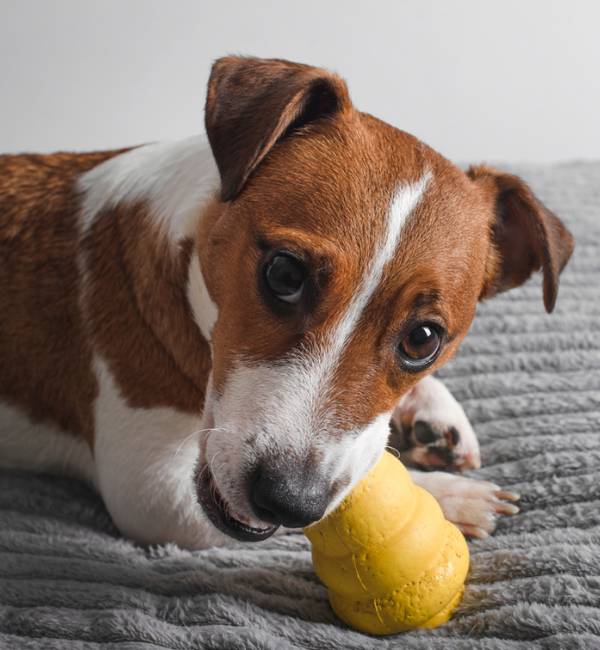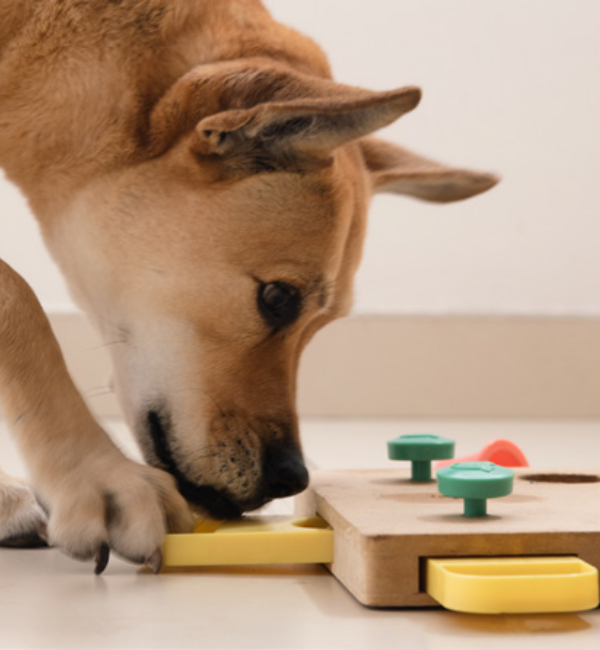Supporting your pet’s recovery after surgery
The recovery period after surgery can be challenging for both you and your pet. While rest is vital for physical healing, it’s equally important to support your pet’s mental wellbeing. Pets who are used to walks, play, and regular activity can become frustrated or anxious when their exercise is restricted.
This guide offers vet-approved activities to help your dog or cat stay calm, stimulated, and happy during recovery — helping you both through the healing process with confidence.
Why mental wellbeing matters after surgery
During recovery, pets often experience changes in their routine. Reduced exercise, limited space, and extra rest can lead to boredom, stress, or frustration.
- Mental stimulation can help:
- Reduce anxiety and restlessness
- Prevent destructive or unwanted behaviours
- Strengthen your bond with your pet
- Provide satisfaction that’s often more tiring than physical exercise
If your pet is finding recovery particularly stressful, please contact your vet. We can advise on additional strategies — including whether short-term medication may be appropriate to help your pet relax and heal comfortably.
Choosing the right treats for recovery
The type of treats you use will depend on your pet’s dietary needs, calorie intake, and preferences. For some dogs, their regular kibble will be enough for enrichment games. Others may need higher-value treats such as:
- Small pieces of cooked chicken
- Liver paste (only if your dog is not on a low fat diet)
- Natural yoghurt
- Commercial dog treats
If your pet is on a recovery diet, these foods can also be used in enrichment activities — just make sure any extras fit within their daily calorie limit to avoid weight gain. Always check with your vet if you’re unsure.

Vet-approved enrichment ideas for recovery
Feeding and activity toys
Instead of feeding from a bowl, make mealtimes more engaging. When selecting activity toys please make sure they are appropriate for your dog’s size and strength. Avoid anything which your dog may potentially swallow and cause an obstruction. These toys encourage natural problem-solving and help calm your pet through mental stimulation.
If you dog is recovering from dental or oral surgery, please check with the veterinary team when it is appropriate to start using activity toys or hard chews.
Stuffable feeding toys
- How to: Fill a toy with your pet’s food or treats.
- Try with: Kibble, recovery food, chicken, or yoghurt.
- Top tip: Mix kibble with yoghurt or wet food and freeze to increase difficulty and duration.
Frozen cups
- How to: Fill a safe plastic cup with kibble or treats, top with water or low-fat yoghurt, and freeze.
- Why it helps: Licking frozen food is soothing and keeps pets occupied longer.
Interactive or treat-dispensing toys
- How to: Great for older dogs or those with paw injuries. Fill the toy and let your pet roll or nose it to release treats.
- Try with: Kibble, recovery food, or small treats.
Lick mats
- How to: Spread wet food, yoghurt, or liver paste over the surface.
- Top tip: Freeze for extra challenge — licking is naturally calming and rewarding.
Snuffle mats, towels, and cardboard boxes
Encourage your pet to use their nose — a mentally tiring and satisfying skill.
Snuffle mats
- How to: Hide kibble or treats within the mat for your dog to sniff out.
- DIY option: Use an old towel or cardboard box filled with fabric strips.
Towels and boxes
- How to: Roll treats inside a towel or hide them in a box filled with paper or cardboard tubes.
- Top tip: Increase difficulty by tying the towel loosely or closing the box flaps.
Scatter or “seek and find” games
Let your dog put their nose to work!
- How to: Scatter kibble or treats on the floor or in the garden.
- Safety note: Avoid stairs, heights, or toxic plants such as oak leaves.
- Top tip: Teach the command “find it” for extra mental stimulation.
Puzzle feeders and homemade brain games
Puzzle feeders
- How to: Fill as per the manufacturer’s instructions.
- Try with: Kibble, chicken, yoghurt, or wet recovery food.
Muffin tin game
- How to: Place treats in each cup and cover with tennis balls or other safe obstacles.
- Top tip: If your dog gets too excited by tennis balls, use quieter alternatives.
Plastic bottle puzzle
- How to: Remove the lid and seal, fill with kibble or treats, and let your dog work out how to get them out.
Gentle training and new cues to try
The recovery period is a great time to revisit basic training or introduce new mental challenges that don’t require much movement.
Teach scent work
- Place a scented fabric (e.g., cloves) in a cup. When your dog sniffs it, reward them.
- Once they understand the game, introduce new scents with different commands.
Teach “watch me” or “look at me”
- Encourage your dog to make eye contact before giving a treat.
- Builds focus and strengthens your bond.
Teach “touch”
- Reward your dog for touching your hand with their nose. This can evolve into useful training cues.
Follow your hand
- Use a treat in your hand to guide gentle movement and reward them for following calmly.

Supporting your pet’s recovery journey
Mental stimulation during recovery helps your pet stay calm, content, and connected with you. These simple activities make rest days more rewarding and promote a smoother healing process.
If you have any questions about post-operative recovery, mental wellbeing, or which enrichment ideas are safest for your pet, please contact your veterinary team. We’re always happy to help guide you through your pet’s recovery.
